
A torn meniscus is a common knee injury involving damage to the cartilage that cushions your knee joint. Each knee has two C-shaped menisci that act as shock absorbers and help stabilise your joint. Tears can happen suddenly during sports or gradually with age. Symptoms include pain, swelling, stiffness, and treatment may involve rest, physiotherapy, or surgery, depending on the severity. A torn meniscus prognosis is generally good - most people recover fully with proper care.
A torn meniscus is a common knee injury that occurs when the cartilage in your knee joint tears, often due to sudden twisting or excessive force.
Each of your knees has two C-shaped pieces of cartilage - the medial meniscus (inside of your knee) and the lateral meniscus (outside of your knee). These structures act as shock absorbers, cushioning your bones and stabilising your joint.
Meniscus tears can happen during sports, sudden movements, or even daily activities, particularly in older adults whose cartilage has weakened over time. Arthritis can also contribute to meniscus degeneration, making it more prone to injury.
There are two primary types of meniscus tears:
Both types can vary in severity, from minor fraying to complete tears, sometimes occurring alongside other knee injuries, such as anterior cruciate ligament (ACL) damage.
Symptoms of a torn meniscus can develop gradually or suddenly, depending on the severity of the injury. Common signs include:
If you have torn meniscus symptoms and suspect a meniscus tear, it’s important to seek medical evaluation to determine the best course of treatment.
A torn meniscus typically doesn’t show visible signs on the outside, as the injury occurs deep within the knee joint. However, in some cases, you may notice swelling, puffiness, or a slight bulge around the knee. These external changes are usually due to inflammation or fluid buildup following the injury. In more severe cases, where part of the meniscus moves out of place, there may be a visible deformity or unevenness in the shape of the knee.
Because outward signs can be subtle or absent, the best way to confirm the injury is with a clinical examination and imaging tests such as an MRI. If you're asking, what does a torn meniscus look like on the outside, the answer is that it often looks normal, but underlying damage still requires medical attention.
A torn meniscus can result from sudden twisting, pivoting, or excessive force on your knee. This often happens during sports, particularly those involving quick directional changes, such as football, basketball, and tennis. Even deep squatting, kneeling, or lifting heavy objects can lead to a tear.
In older adults, meniscus tears can occur due to degenerative changes in your knee, where cartilage weakens over time. In these cases, even minor movements, such as standing up awkwardly or stepping on an uneven surface, may cause a tear. Arthritis can also contribute to meniscus degeneration, increasing the likelihood of injury.
Certain factors can increase the risk of developing a meniscus tear:
A torn meniscus is typically diagnosed through a combination of physical examination and imaging tests.
A doctor will assess your knee by checking for swelling, tenderness, and range of motion limitations. They may perform a specific torn meniscus symptoms test, such as the McMurray or Thessaly test, which involve rotating the knee to detect pain, clicking, or locking sensations that suggest a tear.
Imaging tests are often used to confirm a diagnosis. X-rays can help rule out other causes of knee pain, such as fractures or arthritis, although they don’t show cartilage directly. An MRI is the most effective imaging tool for identifying meniscus tears, as it provides detailed images of both soft and hard tissues in the knee.
In some cases, your doctor may recommend knee arthroscopy. This minimally invasive procedure involves inserting a small camera (arthroscope) into your knee joint through a tiny incision. It allows the surgeon to view the inside of your knee in real time and, if necessary, treat the tear during the same procedure.
The prognosis for a torn meniscus is generally very positive, especially with early diagnosis and appropriate treatment. Most people are able to return to full activity, whether they recover through conservative care or surgical intervention.
For those who undergo meniscus repair surgery, recovery typically involves a few months of physiotherapy to restore strength and mobility. Patients who have a partial meniscectomy (removal of part of the meniscus) often recover more quickly, but may face a slightly increased risk of developing osteoarthritis in the long term due to reduced shock absorption in the knee joint.
With proper rehabilitation and ongoing joint care, many individuals regain full function and return to sports, work, and daily activities without lasting limitations.
Specific treatment for a meniscus tear depends on several factors, including age, overall health, severity of the injury, and personal preferences. Some tears heal with conservative management, while others may require surgical intervention.
Torn meniscus treatment often begins conservatively, focusing on pain relief and healing. Many tears improve over time without surgery, especially those linked to arthritis or minor injuries. A common approach is the RICE method (Rest, Ice, Compression, Elevation), which helps reduce swelling and promote recovery:
Over-the-counter pain relievers, such as ibuprofen or acetaminophen, can help manage discomfort and reduce inflammation. If pain persists or worsens, consulting a healthcare provider is recommended to explore additional treatment options.
Physiotherapy is often recommended to strengthen muscles around your knee, improve stability, and restore your range of motion. A physiotherapist may design a rehabilitation program of exercises for a torn meniscus that includes:
If symptoms persist despite conservative treatment, torn meniscus surgery may be necessary. There are two main surgical approaches: arthroscopic surgery and knee replacement, depending on the severity of the injury and overall knee health.
Knee arthroscopic surgery is a minimally invasive procedure used to repair or remove damaged cartilage. During the procedure, your surgeon inserts a tiny camera into your knee joint to assess the damage and perform repairs. Arthroscopic surgical options include:
Arthroscopic surgery is often recommended for younger patients or those with isolated meniscus tears, as preserving as much of the meniscus as possible helps maintain knee function.
If you have severe arthritis-related meniscus damage, a total knee replacement may be necessary. This procedure involves replacing your damaged knee joint with an artificial implant, restoring mobility and reducing pain. Knee replacement is typically recommended when:
Knee replacement can significantly improve your quality of life, especially for older adults with chronic knee pain.
How long does it take to heal a torn meniscus? Torn meniscus recovery time depends on the severity of the tear and the treatment used:
Following your rehab plan and staying active at the right pace can help speed up your torn meniscus recovery time and reduce long-term issues.
While accidental injuries can be difficult to avoid, there are steps you can take to reduce your risk of a torn meniscus:
By following these steps, you can help protect your knees and lower your chances of injury.
Ramsay Health Care UK provides comprehensive care for a torn meniscus, from fast-track diagnosis to personalised treatment plans. Their orthopaedic specialists offer access to advanced imaging to confirm the extent of the injury and guide next steps.
Treatment options include conservative management, like physiotherapy and guided rehabilitation, as well as arthroscopic meniscus surgery for more complex or persistent tears.
Whether your injury is sports-related or due to wear and tear, Ramsay’s team is committed to helping you recover mobility, reduce pain, and return to daily life with confidence.
Yes, some meniscus tears can heal on their own - especially small or degenerative tears that don’t cause locking or instability. Conservative torn meniscus treatment like rest, ice, compression, elevation (RICE), and physiotherapy can help manage symptoms and promote healing. However, larger or complex tears may require torn meniscus surgery if symptoms persist. Always consult a healthcare professional for an accurate diagnosis and treatment plan.
Yes, many people can walk with a torn meniscus, especially if the tear is small. However, walking may cause pain or swelling, so it’s best to limit activity and follow medical advice.
You may be able to bend your knee, but it could feel stiff, painful, or catch during movement. Avoid forcing it, especially if it causes discomfort.
A knee brace can help provide stability and reduce strain, especially for more severe tears or during recovery. Your doctor may recommend a hinged or compression brace depending on your needs.
Avoid twisting, deep squatting, running, sitting cross-legged, locking your knee straight, or doing too much too soon. These can worsen the injury or delay healing.
Avoid keeping your leg locked straight for long periods. Gentle movement is encouraged to maintain flexibility, but always follow your physiotherapist’s guidance.
Yes, but stick to low-impact exercises like cycling or swimming. Avoid activities that involve twisting or high impact. Always let pain be your guide.
In addition to traditional torn meniscus surgery and physiotherapy, some clinics now offer meniscus injections (like platelet-rich plasma or hyaluronic acid) to reduce pain and support healing in certain cases.
There’s no strict age limit. Surgery is considered based on overall health, activity level, and the type of tear - not just age. Older adults with degenerative tears may benefit from non-surgical options first.
Yes, especially if the tear leads to joint instability or accelerates arthritis. Removing part of the meniscus can reduce shock absorption, increasing long-term wear on the joint.


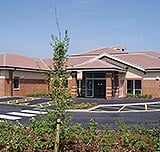


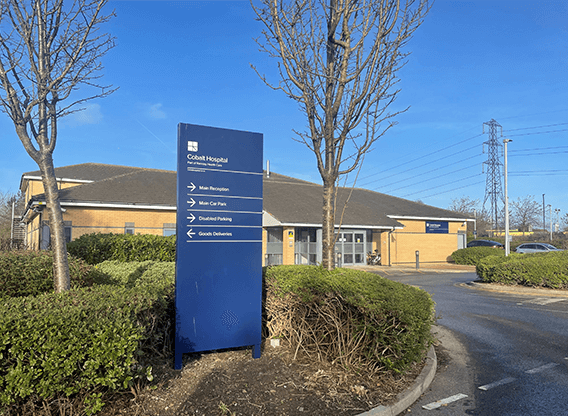




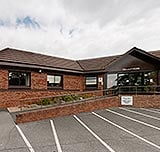









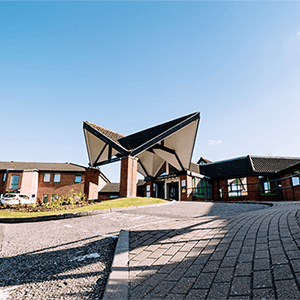


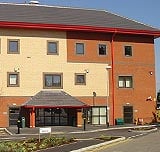

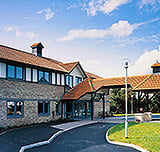
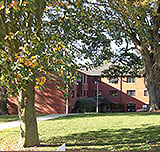


Ramsay Health Care UK are celebrating after being named as a Gold National Joint Registry (NJR) Quality Data Provider for the second year running, after successfully completing a national data quality audit programme for 25 hospitals offering orthopaedic procedures.
Duchy Hospital in Truro, proudly opened its state-of-the-art Imaging and Outpatient Suite representing a major investment in patient care, designed to enhance diagnostic capabilities and improve the overall experience for patients across Cornwall.
There’s cause for celebration at West Midlands Hospital in Halesowen, as the team marks an incredible milestone — 100 successful joint replacement surgeries using the advanced CORI robotic system.
The information, including but not limited to, text, graphics, images and other material, contained on this website is for educational purposes only and not intended to be a substitute for medical advice, diagnosis or treatment. Always seek the advice of your physician or other qualified health care provider with any questions you may have regarding a medical condition or treatment.
No warranty or guarantee is made that the information contained on this website is complete or accurate in every respect. The testimonials, statements, and opinions presented on our website are applicable to the individuals depicted. Results will vary and may not be representative of the experience of others. Prior patient results are only provided as examples of what may be achievable. Individual results will vary and no guarantee is stated or implied by any photo use or any statement on this website.
Ramsay is a trusted provider of plastic or reconstructive surgery treatments as a part of our wrap-around holistic patient care. Our personal, friendly and professional team are here to support you throughout to ensure the best possible care. All procedures we perform are clinically justified.
*Acceptance is subject to status. Terms and conditions apply. Ramsay Health Care UK Operations Limited is authorised and regulated by the Financial Conduct authority under FRN 702886. Ramsay Healthcare UK Operations is acting as a credit broker to Chrysalis Finance Limited.
Ramsay Health Care UK is not currently recruiting for any roles based outside of England. If you are interested in applying for a role with Ramsay Health Care UK, please note that all available positions are advertised exclusively on our official website: https://www.ramsayhealth.co.uk/careers. Be cautious of individuals or organisations that approach you directly for remotely-based roles. Always verify the authenticity of the job offer and be careful with whom you share your personal information. For more information and advice on employment fraud, please visit: https://www.ramsayhealth.co.uk/careers/recruitment-fraud